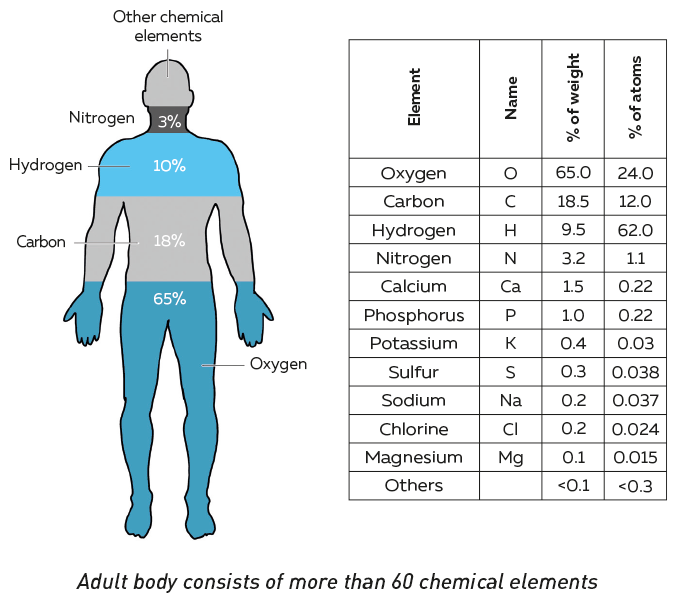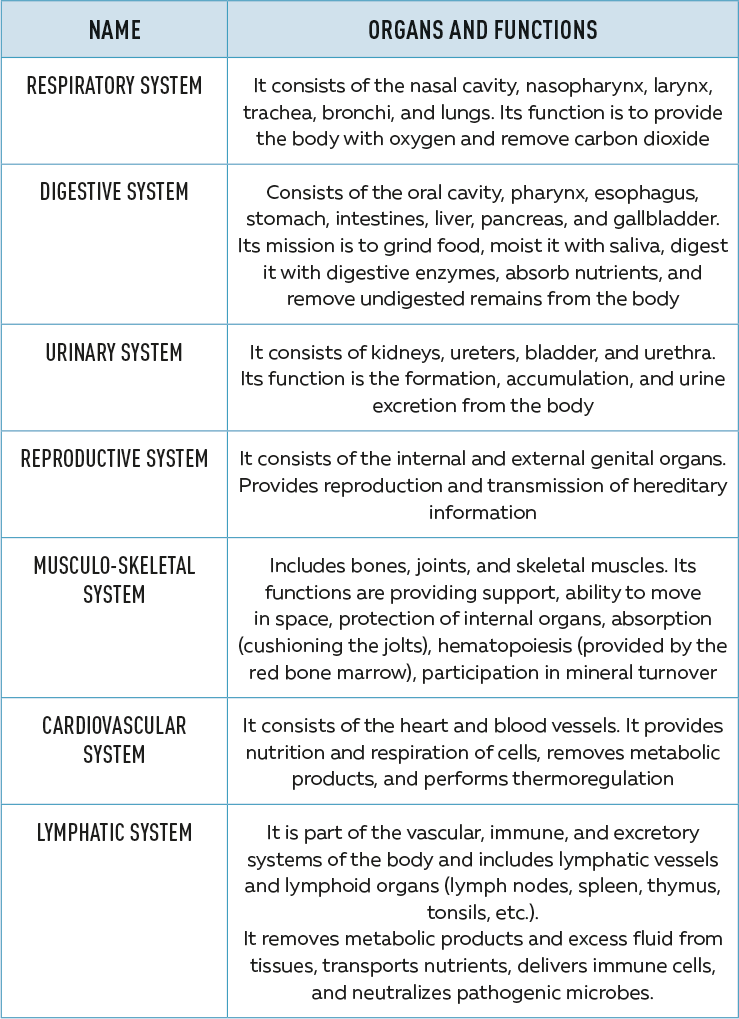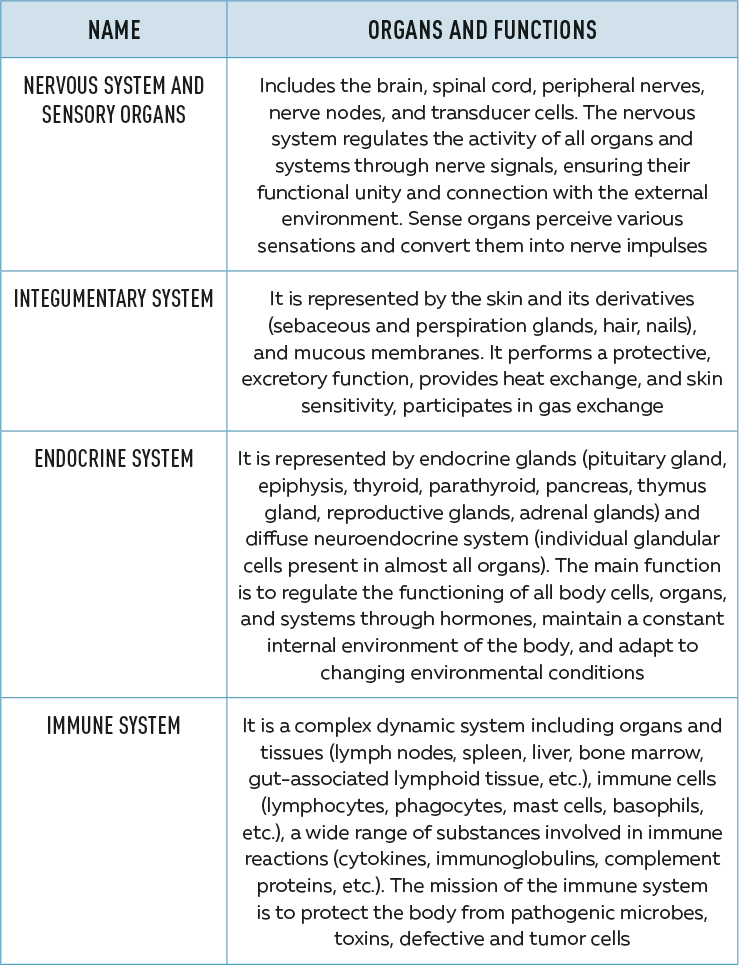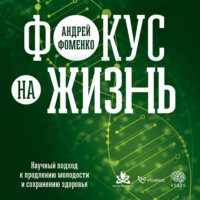
The Power Of Youth. How To Tune Our Mind And Body For A Long And Healthy Life
The second mode of gene regulation is methylation, i.e., the addition of a methyl group – CH3 – to DNA. As a result, cytosine is transformed into 5-methylcytosine. Once the signal is received, the methyl group attaches to the DNA, which prevents enzymes from binding to it and changes the density of the nucleosome, as with histone modification, making genes inactive. In contrast, the process opposite to methylation, i.e., demethylation, activates previously "silenced" genes, which promotes the formation of new proteins.

Understanding the mechanisms that "turn on" and "turn off" genes can give science and medicine the ability to regulate the aging process, as well as to control and treat various diseases, including those of genetic origin. For example, "uncontrollable" genes are often "guilty" in the development of cancer – their "silencing" will stop further growth of the tumor. Therefore, the most prestigious scientific prizes are awarded for research in this field: for example, in 2006, American scientists Andrew Fire and Craig Mello were awarded the Nobel Prize for the discovery of another epigenetic mechanism – RNA interference.
FUN FACT
ONLY 5-10 % OF DISEASE DEVELOPMENT DEPENDS ON GENETICS
Canadian scientists at the University of Alberta conducted the largest meta-analysis, summarizing data from 569 genetic studies over two decades, and concluded that the association between most human diseases and genetics is very low – only 5-10 %. This means that human life and health are not predetermined by genes, but depend more on lifestyle and environment.
In their work, the researchers studied the relationship between gene mutations known as single-nucleotide polymorphism (SNPs) and various diseases and conditions. Many SNPs are considered risk factors for the development of hundreds of diseases, but the results of a meta-analysis have shown that this relationship is highly questionable.
Experts have found that most diseases, including many cancers, diabetes mellitus type II, and Alzheimer's disease, are only 5-10 % or less dependent on genetic factors. However, there are exceptions: for example, Crohn's disease, gluten-sensitive enteropathy, and age-related macular degeneration, for which the genetic risk is 40–50 %.
Despite these rare exceptions, it has become apparent that in most cases the development of disease is related to metabolic disorders, environmental and lifestyle factors, or exposure to dangerous bacteria, viruses, and toxic substances. It can be concluded that we should not blame deviations in health on heredity, and it is better to monitor the ecological security in which people live and work: food, water, air quality, etc., as well as lead a healthy lifestyle.
We can monitor epigenetics in action through the observation of the lives of identical twins who have identical DNA at birth. These observations show how strong the differences in gene expression of twins can be if they live in different conditions and lead different lifestyles. In theory, the disease in twins should develop equally, but it is far from being true: depending on various factors, only one of them may have symptoms.
This finding supports a study conducted in 2005[28]. Scientists studied several dozen pairs of identical twins 3–74 years old. It turned out that people did have similar gene expression in childhood because they were in about the same conditions: they lived in the same house, went to the same school, and ate similar food. However, the older the twins got, the more differences there were between them. And when the siblings separated as adults, and started to lead different lifestyles, to have some different hobbies, to work in different fields, the number of these differences increased several times.
It is the same with ordinary people: as soon as you change your lifestyle in one way or another, your genes will manifest themselves differently. And this changed methylation profile we pass on to our children! Why don't we then take advantage of this ability to make genes work for better health, slower aging, and longer life? Knowing how the epigenetic mechanism works can enable you to control your genetic code and thereby silence the "bad" genes inherited and activate the "good" ones. So how do we start the chain of beneficial epigenetic changes?
FACTORS THAT MAY AFFECT OUR GENES
Although epigenetics is still in its infancy, much is already known about the ways to change the activity of hundreds or even thousands of genes.
NUTRITION. In 2003, a study at Duke University (USA) showed that nutrition not only changes DNA operation but also causes hereditary transformations[29]. Test objects were so-called agouti mice. They differ from normal mice in the more active special gene responsible for the formation of the agouti signal peptide. This protein makes animals prone to obesity, increases the likelihood of tumor development, and produces a pigment in the follicles, giving the fur a yellow color (instead of brown or black).
In the study, female agouti mice shortly before mating were "put" on a special diet rich in folic acid, vitamin B12, and the amino acids, choline, and methionine. This dietary pattern was maintained throughout pregnancy and the lactation period. Most of the young mice were born with normal color and healthy metabolic processes, with no tendency to become obese as adults. Moreover, several more generations of rodents born from the first offspring of agouti mice also showed no signs of agouti peptide activity, although they adhered to a standard diet.
Such results, experts say, are very applicable to humans as well. They state that folic acid and vitamin B12 deficiency in pregnant women leads to negative changes in methylation, which can lead to pathologies manifesting not only in the child but even in their future children and grandchildren.
A correct diet and healthy lifestyle can help silence the expression of hundreds of genes associated with cancer development. This was shown in a 2008 experiment carried out by scientists from the University of California, San Francisco[30]. For three months, men diagnosed with prostate cancer were on a low-fat plant-based diet and received vitamin and amino acid supplements. In addition, an exercise program was designed for them. As a result, patients were able to change the expression of more than 500 genes: activate 48 genes reducing tumor growth and suppress 453 genes associated with tumor overgrowth.
SPORT. Exercise at least twice a week can change the activity of several thousand genes. A study conducted by researchers from Lund University (Sweden) showed that in volunteers who regularly attended aerobic training for six months, there were epigenetic modifications in 7,663 genes associated with delayed development of type II diabetes and obesity[31].
Exercise can slow down the development of obesity, even in those who have a genetic predisposition. An international team of experts studied data from more than 200,000 patients and concluded that regular exercise suppresses the activity of 11 genes associated with weight gain[32]. Among them is the FTO gene, which increases the likelihood of obesity by 30 %.
Experts from Massachusetts General Hospital proved that increasing physical activity can reduce the risk of depression among people who are predisposed to this disorder[33]. They calculated the genetic risk for each of the eight thousand participants in the study and then surveyed how long it took them to exercise and what sports they did. Then they monitored the health of the subjects for two years.
The most active people showed a lower tendency to develop depression, even though they had a high genetic risk. The likelihood of a new episode of depression for them was reduced by 17 %.
According to scientists, four hours a week would be enough to change the expression of the right genes and protect against repeated episodes of depression. It does not matter what kind of physical activity you do: both high-intensity exercises (aerobics, machines, dancing) and moderate-intensity ones (yoga or Pilates) are good.
BAD HABITS. Tobacco smoking is one of the most powerful negative lifestyle factors that affect not only the whole body but also gene activity, "turning on" and "turning off" entire clusters of different genes. Epigenetic modifications can cause the development of many diseases: cancer, chronic obstructive lung disease, cardiovascular disease, osteoporosis, etc.
Every year more studies are proving that smoking irreparably changes the epigenetic state of human DNA. An international team of experts analyzed and compared the DNA methylation profiles of former and current smokers, as well as those who have never smoked[34]. The researchers came to the following conclusions.
● Smoking changes the activity of more than seven thousand genes – i.e., more than a third of all known protein-coding genes that make up our genome.
● In people who quit the bad habit, only five years after quitting, most DNA methylation sites returned to the levels seen in those who never smoked.
● However, there were also areas of DNA that remained with the "nicotine" tag even 30 years after quitting smoking and continued to function in the same way as active smokers.
● Most of the genes with altered expression due to smoking have been associated with numerous diseases, such as cancer and heart disease.
As for alcoholism, experts from Cambridge University (UK) proved that alcohol abuse causes irreversible changes in the DNA structure of blood stem cells (double-strand break, poor DNA repair – the function of damage repair, rearrangement inside chromosome parts), which leads to malignant tumors[35]. For example, alcohol dependence increases the risk of developing at least seven types of cancer, including the most common, breast, and colon cancer.
Numerous studies have shown that drugs, both light and heavy, are not only harmful to those who use them but also contribute to birth defects and genetic diseases in their children.
American researchers at Duke University have found a potential link between cannabis use by fathers and the development of mental illness in their children[36]. In men who used marijuana, they found several adverse changes in gene activity associated with autism, schizophrenia, and post-traumatic stress disorder. Experiments on rats showed that the born offspring had similar epigenetic changes. This confirms the likelihood of the "marijuana" tag transmission for generations. Another study by the university showed that the father's use of marijuana affects the child's cognitive functions: abnormalities were found in certain brain areas related to learning, memory, reward, and mood[37].
ENVIRONMENT. One of the factors that certainly affects gene expression, and thus our well-being, is air quality. Experts from Monash University in Australia proved that even short-term exposure to polluted air adversely affects the activity of six genes responsible for the severity of oxidative stress and inflammatory reactions in the body[38]. The "abnormal" methylation profile that was found in these DNA regions was associated with the development of dangerous cardiovascular, respiratory, and cancer diseases, as well as an increased risk of premature death.
CONTACT WITH PESTICIDES. Many recent studies have examined the effects of chemicals on gene expression, and several toxins have been identified that leave epigenetic tags in DNA. These are bisphenols in plastics and epoxy resins, phthalates in vinyl floors, plastic, perfluorochemicals used to create non-stick coatings on cookware, pesticides, herbicides, salts of heavy metals, etc. Russian scientists from the Institute of Experimental Medicine of the RAS conducted an experiment, the results of which showed that the introduction of a single dose of bisphenol into a pregnant female mouse disrupts the methylation profile of several DNA regions, which causes problems in fetal development[39].
Significant epigenetic modifications can be caused by vinclozolin. This was proved by American scientists from the University of Nebraska-Lincoln and Rutgers University (USA) and showed another good example of epigenetic imprinting[40]. In the experiment, pregnant rats were given vinclozolin in their food and observed how it would affect their babies. It turned out that male children had problems with sperm quality and quantity as they got older. And this effect persisted for four generations of laboratory animals and then disappeared.
STRESS, RELATIONSHIPS, THOUGHTS. Not only "clear" signals, such as food or toxin exposure, can change gene expression. Even the way a person thinks and feels affects gene activity. Genes very quickly respond to prolonged stress, constant anxiety, fear, arguments, and anger. They start a chain of adverse biochemical processes in the body, leading to disease development. But it is important that our genes also respond with a positive "reaction" to showing gratitude, love, and optimism.
A team of experts from Ohio State University (USA) conducted a study to find out how an ordinary family argument can affect the rate of wound healing, an important indicator of genetic activity[41]. Scientists gave slight injuries on the skin of all participants and monitored the rate of healing by the levels of three proteins responsible for tissue regeneration. During the first visit, the couples had to talk about any pleasant topic, and during the second visit, they had to remember their last unresolved argument. It turned out that after a family quarrel, spouses' wounds healed more slowly and the levels of produced proteins responsible for healing were lower than after a pleasant conversation. And in the most hostile couples – those who argued with mutual recriminations, humiliations, and accusations – the injuries took even longer to heal than in partners who were less hostile to each other. With thoughts and emotions alone, the spouses were able to induce appropriate epigenetic changes.
CONCLUSION
Discoveries in the field of epigenetics, which increase every year, convince us that genes are not a sentence: it does not matter whether we inherit "good" or "bad" genes, it is important how we use them. Most people probably have the potential for active long life in their genes. And in the future, no doubt, we will find a way to unlock it.
CHAPTER 4
BODY
IF YOU WANT TO PROPERLY USE SUCH A COMPLEX MECHANISM AS THE HUMAN BODY, IT IS NECESSARY TO UNDERSTAND HOW IT IS BUILT. A HUMAN IS VULNERABLE TO DISEASE WITHOUT KNOWING THEIR PHYSIOLOGY. THE MAIN TASK OF THOSE WHO WANT TO BE HEALTHY AND LIVE LONGER IS TO SUPPORT THE WORK OF THE BODY.
WHAT OUR BODY IS
CELLSThe human body is made up of cells, the basic structural units, which work together and perform the various functions necessary to sustain life.
The human body weighing 70 kilograms consists of an average of 30 trillion cells. And most of them are erythrocytes – they account for 84 %. Then there are thrombocytes – 4.9 %, bone marrow cells – 2.5 %, vascular endothelial cells – 2.1 %, lymphocytes – 1.6 %, and hepatocytes – 0.8 %. Muscle and fat cells account for 0.1 % of the total cell number[42].
For the body to function properly, there is a continuous process of replacing old cells with new ones. About 3.8 million cells are renewed every second, and almost 330 billion cells per day. Even when a human dies, it will be a while before all the cells in the body die.
Researchers at the Karolinska Institute (Sweden), led by biologist Jonas Friesen, calculated the lifespan of individual cells, finding that they change differently – depending on the type[43]. For example, the epidermal cells that make up human skin are renewed every two weeks. Erythrocytes, which carry oxygen from the lungs to the tissues of the body, live for four months, while neutrophils, a type of white blood cell, live only for two days.
The life of liver cells is between 300 and 500 days. The epithelial cells lining the intestine last only five days and then are replaced by new cells – they are among the shortest-lived in the body. Without them, the average age of all intestinal cells is 15.9 years. Skeletal tissue cells live about 10 years, while cells of rib muscles live 15.1 years[44].
But not all cells are renewed: for example, the cells of the retina and lens do not change throughout life. This explains the natural deterioration of vision with age. For a long time, it was believed that nerve cells also live as long as humans, die with aging, and do not renew. However, recent data have shown that new neurons are formed from stem cells, but it is not yet known how functionally full-fledged they can be. Scientists estimate that the adult male brain contains 86.1 ± 8.1 billion neurons[45].
According to Friesen, the average lifespan of a human cell is 7–10 years. This statement has caused the popular misconception that "the human body renews every seven years." This is not true, because cell replacement is a continuous process: the body renews in different parts at different rates depending on the needs and functions.
ATOMSAt a more fundamental level, cells consist of molecules, which, in turn, consist of atoms (from Greek ἄτομος "uncuttable"). An adult human body weighing 70 kg contains about 6.7 octillion (6.7 × 1027) atoms, 96.5 % of which are chemical elements[46] such as hydrogen, oxygen, carbon, and nitrogen. About 4 % are other ones: calcium, phosphorus, sodium, potassium, sulfur, etc.[47].
Most of the chemical elements come from the environment. When we eat, drink, or breathe, atoms enter the body. They not only compose cellular structure but also ensure the flow of chemical processes, supporting vital activity.
When we exhale, sweat, or lose body tissues, i.e., excrete anything into the environment, the atoms return to the Earth's biosphere. From there they enter the bodies of other people, animals, and plants. Thus, most of the atoms in the body are constantly replaced. And they do it differently – some in a few hours, others in a few years.

All these atoms are not regenerated every day. They have been around for billions of years and existed long before the Earth was formed. The first atoms formed in the early days of the universe, 13.7 billion years ago, about 380,000 years after the Big Bang. By that time, the universe had already cooled enough for electrons and protons to combine and form hydrogen and helium. The first stars were born from these atoms, and because of nuclear reactions in them, other heavier elements were formed.
Every particle of our body was once inside such stars or was formed because of its death. "Every atom in your body came from a star that exploded. It is the most poetic thing I know about physics. And, the atoms in your left hand probably came from a different star than your right hand. You are all stardust," writes physicist Lawrence Krauss in his book "A Universe from Nothing."
BODY SYSTEMS
Cells composed of atoms form tissues: epithelial, connective, muscular, and nervous. And tissues form organs. The latter, in turn, are combined into systems.


All systems interact closely with each other. For example, the digestive system provides the intake of nutrients in the blood for energy. However, the cells can produce energy only with oxygen, which is supplied by the respiratory system.
HOMEOSTASIS
Each cell can only function under certain conditions: temperature, acidity level (pH), a certain concentration of fluids, electrolytes, and oxygen – there are a lot of factors. Maintaining the balance of the body's systems necessary to sustain life is called homeostasis.
Under the influence of harmful factors which can damage the body, there is a redistribution of innate resources: with hypothermia, the body provides a flow of extra blood and, consequently, heat to the vital organs by narrowing the blood vessels of the skin. When overheated, on the contrary, skin vessels expand, which increases heat loss and remains constant internal temperature.
A well-established system of self-regulation is the most crucial component for a long and healthy life. The functioning of the body allows it to respond adequately to dangers and adapt to changing environmental conditions. Dysfunction in one organ inevitably affects the functioning of other organs and systems. For this reason, in old age people often face several diseases at once, each of which provokes and accelerates the progression of other disorders. A complication of diabetes mellitus, which is often associated with obesity, is a vascular disruption in the whole body, which in turn increases the risk of cardiovascular disease. Joint problems limit a person's mobility, which contributes to weight gain, which, in turn, puts stress on the joints. It is a developmental factor of a wide range of diseases.
It is very important to bear in mind that even a small health issue may result in a cascade of abnormal changes that lead to serious diseases. Even a small nidus of persistent infection, such as a decayed tooth or chronic tonsillitis, provokes the development of inflammation in the digestive tract and creates determinants for intestinal issues. Any violation in the supply of macro and micronutrients will affect every body's cell function with time.
Both physical and mental aspects are important for keeping a healthy body. It is known that chronic stress is an equally important contributor to disease than, for example, nutritional disorder, physical inactivity, or bad habits. On the background of distress, the level of cortisol – a hormone of chronic stress – increases, which negatively affects the immune system, provokes obesity and increases the risk of depression.
Thus, to maintain the stability of the internal environment, and to ensure its functional integrity, it is necessary to take care of all aspects of health. This is achieved by daily measures to prevent both physical and mental disorders, primarily by following a healthy lifestyle, as well as by responding quickly and appropriately to any abnormalities in health.
BRAIN – BODY, BODY – BRAINThe brain controls the body like a powerful computer. It stores and constantly updates information. Since the brain contains a unique "body map," it can monitor the condition of internal organs and regulate important life processes – heart rate, respiration, blood pressure, sleep quality, digestion, and others.
However, this connection is not one-way. The brain receives information about the work of any organ due to receptors – nerve endings that transform stimuli of
the external and internal environment into electrochemical impulses. These impulses are sent through the spinal tracts to the brain, which, based on the information received, regulates the work of peripheral organs.
Due to the connection between the body and the brain, the organs are sensitive to changing body needs. A water deficit signal in the body turns into thirst because of vasopressin. This hormone, responsible for fluid maintenance, affects both the brain and the kidneys, causing them to inhibit fluid excretion.
EXERCISE TO BE HEALTHYIn the modern world, it is important to monitor the condition of your body. It is easy to yield to laziness, stress, and bad habits and not think about what affects the quality of function of organs and the body as a whole. Lifestyle determines human health: junk food leads to weight gain and the development of chronic diseases – obesity, osteoporosis, type 2 diabetes, and others, and with low physical activity the human also deprives themselves of several advantages. In addition, psychic tension, low or high sleep hours, bad habits, etc. affect the overall health. Many aspects and everyday decisions determine how well the body will work not only now, but also in the future. What is the first thing you need to pay attention to maintain, strengthen and improve the health of your own body?







